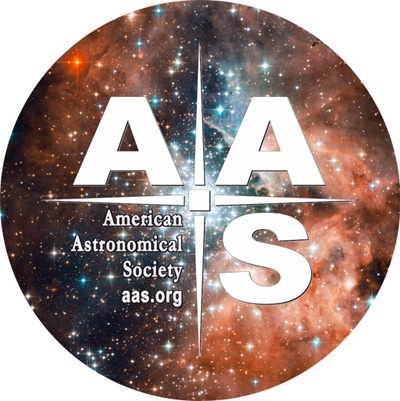17 December 2019
Susanna Kohler

Illustration of the planetary system KIC 10544976, in which a giant planet orbits a binary white dwarf and M dwarf. [Leandro Almeida]
In a study led by Leonardo Almeida (Federal University of Rio Grande do Norte and University of São Paulo, Brazil), scientists announce evidence for a 13-Jupiter-mass planet around an evolved binary system, KIC 10544976, that consists of a white dwarf and a red dwarf star orbiting each other once every 0.35 days.
Why it’s interesting:
This is the first planet found orbiting an evolved binary like this one, and it raises questions as to how it formed. Was the planet born at the same time as the stars, and somehow survived the end of life of the binary member that evolved into a white dwarf? Or was the planet instead born later, out of the gas ejected by this star as it died? By studying the KIC 10544976 planet with next generation telescopes, we should be able to answer this question.
How the planet was discovered:
Observations of the eclipsing binary stars show timing variations in the eclipses. This change in orbit could be caused by one of two things: either the gravitational tug of an additional unseen, massive body, or period fluctuations in the magnetic field of the red dwarf. By studying the magnetic activity cycle for the red dwarf using years of flare and starspot data, Almeida and collaborators were able to rule out the hypothesis that magnetic activity caused the eclipse timing variations. This made the presence of a giant planet the most likely explanation.
Telescopes involved with this project



Citation
L. A. Almeida et al 2019 AJ 157 150.
https://iopscience.iop.org/article/10.3847/1538-3881/ab0963
See the full article here .

five-ways-keep-your-child-safe-school-shootings
Please help promote STEM in your local schools.

AAS Mission and Vision Statement
The mission of the American Astronomical Society is to enhance and share humanity’s scientific understanding of the Universe.
The Society, through its publications, disseminates and archives the results of astronomical research. The Society also communicates and explains our understanding of the universe to the public.
The Society facilitates and strengthens the interactions among members through professional meetings and other means. The Society supports member divisions representing specialized research and astronomical interests.
The Society represents the goals of its community of members to the nation and the world. The Society also works with other scientific and educational societies to promote the advancement of science.
The Society, through its members, trains, mentors and supports the next generation of astronomers. The Society supports and promotes increased participation of historically underrepresented groups in astronomy.
The Society assists its members to develop their skills in the fields of education and public outreach at all levels. The Society promotes broad interest in astronomy, which enhances science literacy and leads many to careers in science and engineering.
Adopted June 7, 2009
